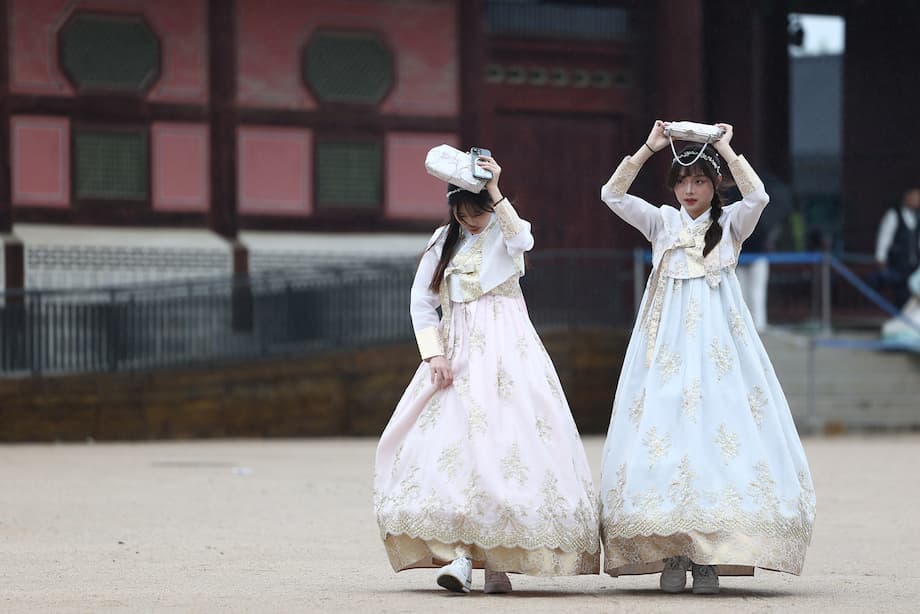South Korea’s Foreign Population Reaches Historic High
South Korea has reached a demographic milestone: as of June 2025, the country’s foreign population soared to an unprecedented 2.73 million, according to data from the Ministry of Justice’s Korea Immigration Service. This figure marks a 1.5 percent increase from the previous month and represents the highest number of foreign residents ever recorded in the nation’s history. The surge comes as South Korea grapples with a rapidly aging society, record-low birth rates, and mounting labor shortages—factors that are fundamentally reshaping the country’s social and economic landscape.
- South Korea’s Foreign Population Reaches Historic High
- Who Makes Up South Korea’s Foreign Population?
- Where Do Foreign Residents Live?
- Why Is South Korea’s Foreign Population Growing?
- How Has the Foreign Population Changed Over Time?
- Government Response: Policy Shifts and Census Inclusion
- Looking Ahead: The Future of South Korea’s Demographics
- In Summary
Who Makes Up South Korea’s Foreign Population?
The 2.73 million foreign residents in South Korea are a diverse group, staying for reasons ranging from education and employment to tourism and family reunification. Of this total, approximately 1.55 million are long-term residents who have registered their personal information with local immigration offices. Another 552,000 are overseas Koreans holding F-4 visas, which grant them rights similar to Korean citizens, such as opening bank accounts and enrolling in the national health insurance program. The remaining 620,000 are short-term visitors, most of whom are tourists staying fewer than 90 days.
Chinese nationals make up the largest share of the foreign population, accounting for 35.6 percent (972,176 people). They are followed by Vietnamese (341,153), Americans (196,664), Thais (173,710), and Uzbeks (98,457). The age distribution skews young, with nearly half of all foreign residents between the ages of 20 and 39, reflecting the country’s demand for working-age migrants.
Visa Categories: A Complex System
South Korea’s immigration system is characterized by a complex array of visa categories, each with its own rights and restrictions. The largest group is F-4 visa holders—foreign nationals of Korean ancestry—totaling 554,895. The E-9 visa, issued under the Employment Permit System (EPS) for non-professional workers, accounts for 341,453 individuals. This program, launched in 2004, allows small and mid-sized companies to legally hire foreign workers for low-skilled jobs, addressing chronic labor shortages in sectors such as manufacturing, agriculture, and construction.
Other significant visa categories include F-5 permanent residency (214,036 holders), D-2 student visas (191,297), and B-2 tourist visas (171,063). The proliferation of visa types has created a multi-tiered system, with only select groups eligible for more permanent or advantageous statuses.
Where Do Foreign Residents Live?
More than half of South Korea’s foreign residents live in Seoul and the surrounding metropolitan area, reflecting the country’s high level of urbanization and the concentration of economic opportunities in the capital region. The Yeongnam region (including Daegu, Busan, and Ulsan) is home to 20.3 percent of foreign residents, followed by the Chungcheong region (12.9 percent) and the Honam region (8.8 percent). This urban concentration mirrors broader demographic trends: over 82 percent of South Korea’s total population lives in cities, making it one of the most urbanized countries in the world.
Why Is South Korea’s Foreign Population Growing?
The record number of foreign residents is not an isolated phenomenon. It is closely linked to South Korea’s demographic crisis, characterized by a shrinking and aging population. As of 2025, the country’s total population stands at around 51.67 million, but the growth rate has turned negative, and projections indicate a steady decline in the coming decades. The total fertility rate—the average number of children a woman is expected to have in her lifetime—remains at a crisis level of 0.75, the lowest in the world and far below the 2.1 needed for population replacement.
South Korea’s population peaked in 2021 and has since begun to decline. The median age is now 45.6 years, and nearly 20 percent of the population is aged 65 or older, officially classifying the country as a “super-aged” society. These trends have led to a shrinking workforce, increased pressure on pension and healthcare systems, and concerns about long-term economic growth.
Labor Shortages and Economic Pressures
One of the most immediate effects of these demographic changes is a shortage of workers, particularly in low-skilled and labor-intensive industries. The Employment Permit System (EPS) was introduced to address this gap, allowing companies to hire foreign workers for up to three years. While the EPS has helped regularize the status of many migrant workers, it does not offer a clear path to permanent settlement or citizenship, reflecting South Korea’s cautious approach to immigration.
According to the Migration Policy Institute, South Korea’s immigration policies remain restrictive compared to other developed countries, with immigrants making up just under 5 percent of the population. Most foreign residents hold temporary visas, and prospects for permanent settlement are limited and often tied to specific visa categories and perceived economic utility.
How Has the Foreign Population Changed Over Time?
The growth in South Korea’s foreign population is a relatively recent development. Until the 1990s, the country was primarily a source of emigrants rather than immigrants. Significant immigration began only in the past few decades, driven by economic growth and the need for labor. The foreign population reached a previous high of 2.52 million in 2019 but dropped sharply during the COVID-19 pandemic, falling to 1.96 million in 2021 as travel restrictions and economic uncertainty took hold.
As the pandemic subsided and South Korea transitioned to an endemic stage, the foreign population rebounded, reaching 2.51 million in 2023 and 2.65 million by the end of 2024. The latest figures represent not only a recovery but a new record, underscoring the growing role of migration in the country’s demographic future.
Comparisons with Japan and Regional Trends
South Korea’s experience is mirrored in neighboring Japan, which also faces a super-aged society and labor shortages. Japan’s foreign population reached 3.8 million in 2024, with similar patterns of temporary migration and restrictive settlement policies. Both countries have gradually increased migration quotas and diversified visa schemes, but significant liberalization remains unlikely in the near future.
According to demographic analysts, South Korea’s workforce could halve by 2065 if current trends continue, threatening economic growth and social stability. The government has responded with a mix of policy measures, including financial incentives for childbirth, expanded childcare support, and efforts to make the country more welcoming to foreign residents.
Government Response: Policy Shifts and Census Inclusion
Recognizing the growing diversity of its population, the Korean government is taking steps to better include foreign residents in national statistics and policymaking. The statistics agency is preparing a more foreigner-friendly survey for the 2025 national census, aiming to make the process accessible and understandable for non-Korean speakers. This initiative reflects a broader strategy to improve the accuracy and inclusiveness of national data, ensuring that the needs and contributions of foreign residents are properly recognized.
President Lee Jae Myung, elected in 2025, has made demographic recovery a cornerstone of his administration. His proposals include providing newlywed couples with substantial loans that can be forgiven based on the number of children born, expanding child allowances, and implementing family-friendly tax reforms. However, experts caution that financial incentives alone may not be enough to reverse the demographic decline, pointing to deeper social and economic factors such as high housing costs, intense educational competition, and changing attitudes toward marriage and family.
Challenges and Opportunities for Integration
As the foreign population grows, questions of integration and social cohesion come to the fore. While many foreign residents are ethnic Koreans returning from China and other countries, others come from diverse backgrounds and may face language barriers, discrimination, and challenges in accessing services. The government’s efforts to make the census and other public services more inclusive are steps in the right direction, but broader societal adaptation will be necessary as South Korea becomes increasingly multicultural.
At the same time, the influx of foreign residents brings opportunities for economic dynamism, cultural exchange, and innovation. Migrants fill crucial gaps in the labor market, contribute to the tax base, and help sustain local communities, particularly in regions facing depopulation. International students and skilled professionals also play a role in driving research, entrepreneurship, and global connectivity.
Looking Ahead: The Future of South Korea’s Demographics
Despite a recent uptick in births—the fastest rate in a generation, according to Statistics Korea—the country’s total fertility rate remains far below replacement level. Projections suggest that, without significant changes, South Korea’s population could plummet to just 15 percent of its current level by 2125. The aging crisis is expected to deepen, with the number of seniors per 100 working-age people rising dramatically in the coming decades.
Immigration, while not a panacea, is increasingly seen as a necessary part of the solution. Policymakers are under pressure to balance economic needs with political caution and social concerns. As the country navigates this demographic crossroads, the experiences of foreign residents—and the policies that shape their lives—will play a central role in determining South Korea’s future.
In Summary
- South Korea’s foreign population reached a record 2.73 million in June 2025, driven by labor shortages, low birth rates, and an aging society.
- Chinese nationals make up the largest group of foreign residents, followed by Vietnamese, Americans, Thais, and Uzbeks.
- The majority of foreign residents live in Seoul and the surrounding metropolitan area, reflecting the country’s urban concentration.
- Visa categories are complex, with most migrants holding temporary or limited-status visas; only select groups have paths to permanent residency.
- Government policies are evolving to better include and support foreign residents, but challenges remain in integration and long-term demographic sustainability.
- South Korea’s demographic future will depend on a combination of increased migration, policy innovation, and societal adaptation to a more multicultural reality.




